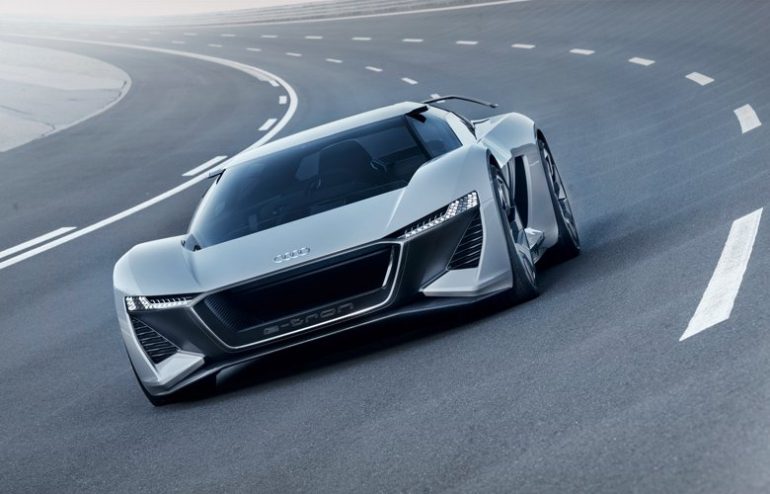Audi has introduced the fully electric PB18 e-tron, a design and technology concept for the high-performance models of the future. The sporty futuristic model is inspired by the company's victories in Le Mans and was created at its new design center in Malibu, California.
The prototype first saw the light of day a little further away, at "Pebble Beach Automotive Week", with its name derived from the abbreviation of Pebble Beach, as well as the most successful racing car in the LMP1 racing category, the Audi R18 e- tron. The PB18 e-tron follows the traditional layout of a sports car with the engine in the center. With proper placement of the batteries, the car's center of gravity is located behind the seats and in front of the rear axle for the benefit of driving pleasure.
The use of aluminum, carbon fiber and synthetic materials ensures a very light frame. Thanks to the new, solid-type (solid-state) batteries the total weight does not exceed 1.500 kg, when the body length reaches 4,53 meters, the width 2 meters and the height -just - 1,15 meters .
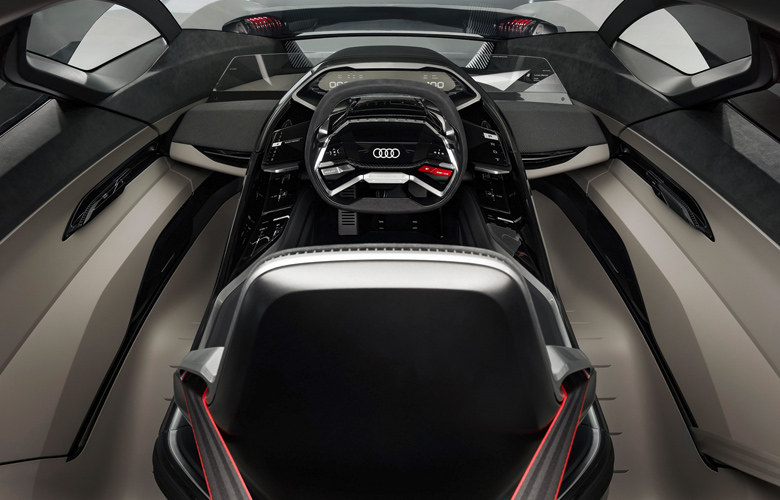
But the most interesting point of the PB18 e-tron is the driving position. The car is designed and "developed" with the driving position (seat, steering wheel, pedal, instrument panel) in the center, just like in a racing car. But because the goal of the designers and engineers was the daily use of the car, it was possible to move the driving position from the center to the side, in a "traditional" road car layout. This movement is very easy and is done by the driver himself in a minimum of time. In this case there is room for a passenger, with his seat and three-point seat belt revealed by a storage place on the floor of the vehicle.
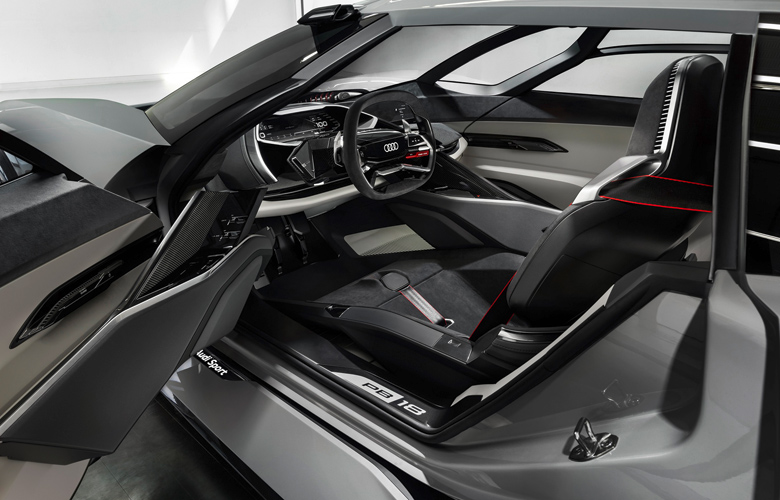
The driving force in the PB18 e-tron is provided by three powerful electric motors: one front and two rear, which move each wheel separately, so that the prototype has an authentic quattro transmission. At the front axle the power reaches up to 150 kW, while at the rear the combined reaches 350 kW. The maximum efficiency reaches 500 kW and with enhanced operation (boosting) the driver has temporarily at his disposal 570 kW. The combined torque of up to 830 Nm ensures acceleration to 0-100 km / h in less than 2 seconds, a performance that does not differ much from that of a prototype of the LMP1 class.
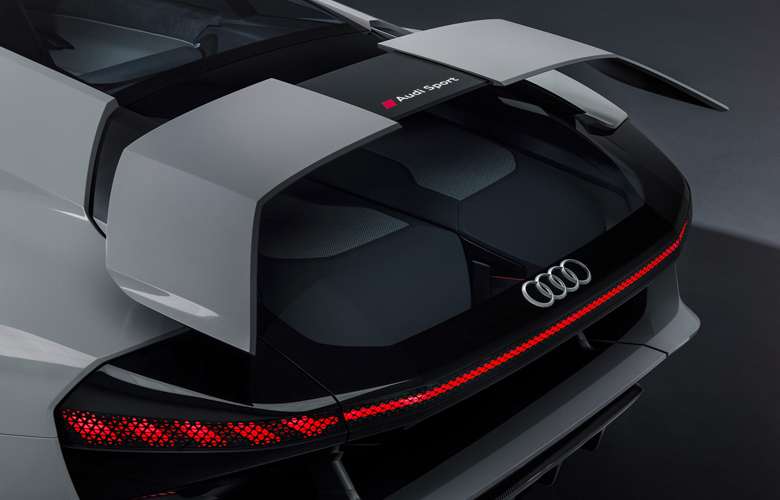
The solid-state liquid-cooled battery has a capacity of 95 kWh and with a single charge offers a range of 500 km according to the WLTP measurement cycle. The PB18 e-tron is designed to charge at 800 volts, which means it can charge its batteries in about 15 minutes. There is also the possibility of wireless charging via Audi Wireless Charging (AWC) which includes an induction floor plate.
Audi has been developing electric or hybrid propulsion vehicles since the late 80s. The first appearance of a brand car combining an internal combustion engine with an electric motor was the duo in 1997, which was based on an A4 Avant. An important technological development for electric cars was the R8 e-tron introduced in 2009 and which in 2012 marked a record time for an electric car in the North Loop of the Nürburgring.
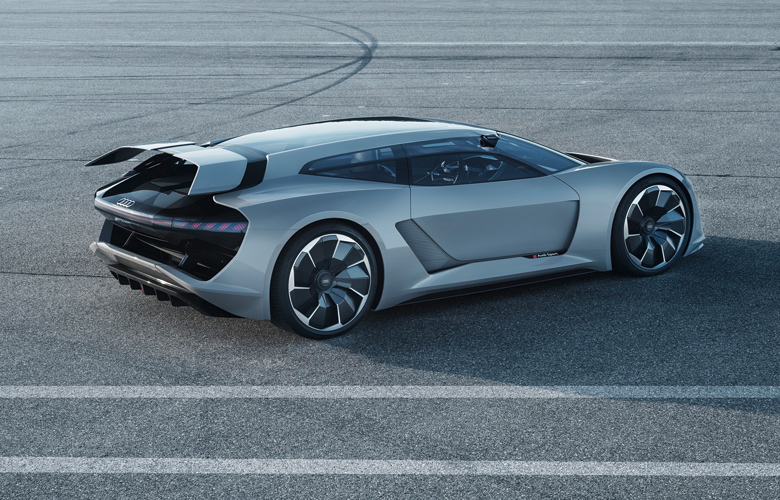
In 2015, at the Frankfurt Motor Show, the brand presented another prototype, the concept e-tron quattro, which was the forerunner of the brand's first electric car. This prototype has now evolved into a regular production model, unveiled in less than a month in San Francisco, USA. As a radically redesigned SUV with electric DNA, the e-tron has a range of more than 400 km in the WLTP cycle while offering the spaciousness and comfort of a typical large Audi model.
